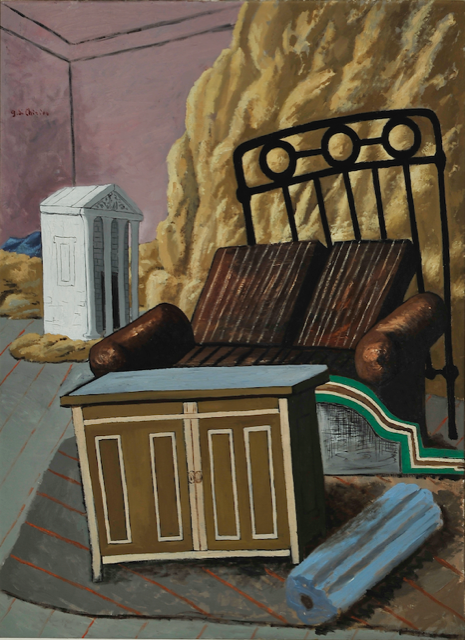Science and Art: AI and innovative technologies allied for de Chirico
The final results of the ARTEMISIA (ARTificial intelligence Extended-Multispectral Imaging Scanner for In-situ Artwork analysis) research project were recently presented during a dedicated event, which was held at the Carlo Bilotti Aranciera Museum of Villa Borghese in Rome, in particular on the painting of Giorgio de Chirico, Mobili nella Stanza, from 1927.
The project, funded by the Lazio Region and the Ministry of University and Research as part of the research and development projects of the Technological District for Cultural Heritage of Lazio (DTC), is the result of a two-year interdisciplinary collaboration between the INFN-CHNet (Cultural Heritage Network) for cultural heritage of the National Institute of Nuclear Physics (INFN), in collaboration with the partnership composed of the Department of Chemical Engineering Materials Environment of the Sapienza University of Rome, the Central Institute for Restoration (ICR), XTeam Software Solutions s.r.l., Vianet s.r.l. and, as a stakeholder, the Sovrintendenza Capitolina (Rome).
“Bringing the instrumentation developed in research laboratories into museums is now the way to bring together the frontier of diagnostic investigations with the need to know and preserve the materials that make up works of art,” explains the scientific coordinator of the project Mariangela Cestelli Guidi of the INFN-LNF DAFNE-Light synchrotron radiation laboratory. “The innovation of this project lies in the integration of two non-invasive diagnostic investigation techniques, hyperspectral imaging and the FT-IR macro-scanner, and the development of artificial intelligence algorithms dedicated both to the automatic recognition of pictorial materials and to the monitoring of the state of conservation of the works under examination. The two technologies – continues Cestelli Guidi – are complementary from the point of view of diagnostic information: hyperspectral imaging is able to identify mainly inorganic materials, such as pigments, while FT-IR infrared spectroscopy is able to identify organic materials, such as binders and paints. The fusion of the information obtained from your techniques, combined with the possibility of querying a database through artificial intelligence, has made it possible in a very short time to obtain a complete characterization of the materials that are present on the work to better direct restoration interventions and plan a correct conservation strategy”.
“In addition, it is also important to pay attention to the issue of sharing with the public the results, information and knowledge that is acquired, for example on the materials and techniques used by the artist. A sharing that today can be facilitated and made even more pleasant and fun by the opportunities offered by new technologies, such as virtual reality, to discover the invisible behind what is seen on the canvas”, concludes Mariangela Cestelli Guidi.

Carlo Bilotti Museum – Giorgio de Chirico painting Mobili nella Stanza – 1927
More information on the achieved results and meeting can be found at the following link: LNF News ARTEMISIA and De Chirico
